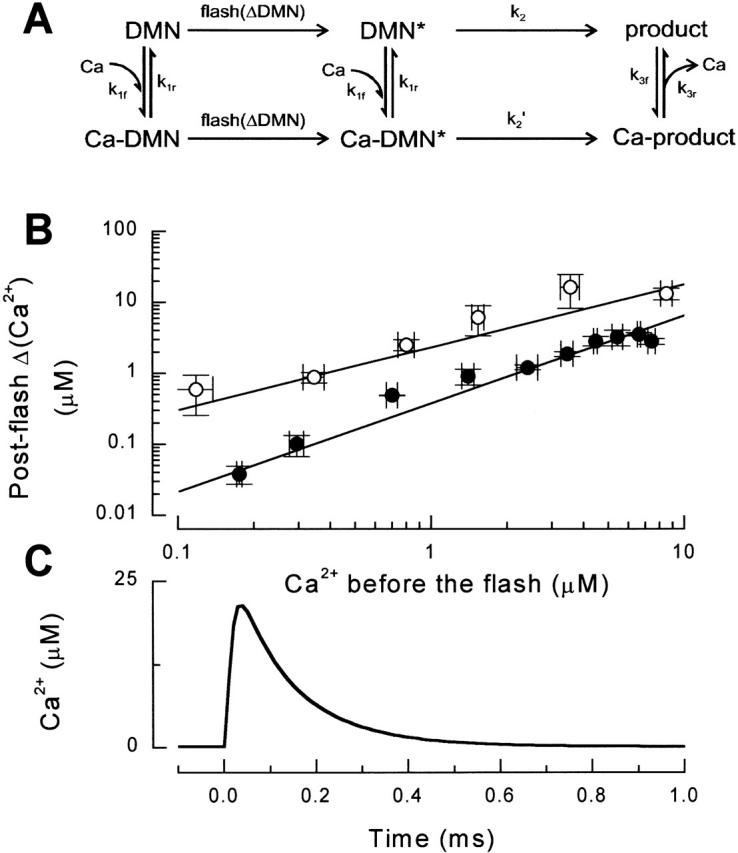Figure 1.

Defining the properties of the rapid Ca2+ spikes. (A) The reaction scheme of DMN complexation and photolysis (Ellis-Davies et al. 1996). The light-induced transitions of DMN into the activated states are assumed to be irreversible and instantaneous, and only a fraction of DMN (ΔDMN; 0.5–2% in our experiments) undergoes this reaction step. Other transitions in the scheme are reversible. (B) The increase in steady state Ca2+ after the flash plotted as a function of preflash steady state Ca2+ in five independent experiments. The total DMN concentration was always 3 mM. Different symbols denote different power settings of the laser flash. For a given flash energy the log–log plot of ΔCa2+ vs. Ca2+ was linear and was used to precalibrate flash energy in a given experiment. (C) The time course of a typical calcium spike reconstructed from the pre- and postflash steady state Ca2+ concentrations. The on and off portions of the calcium profile could be fitted by monoexponential functions, giving τon = 6.5 ± 1.5 μs and τoff = 106 ± 1 μs.
